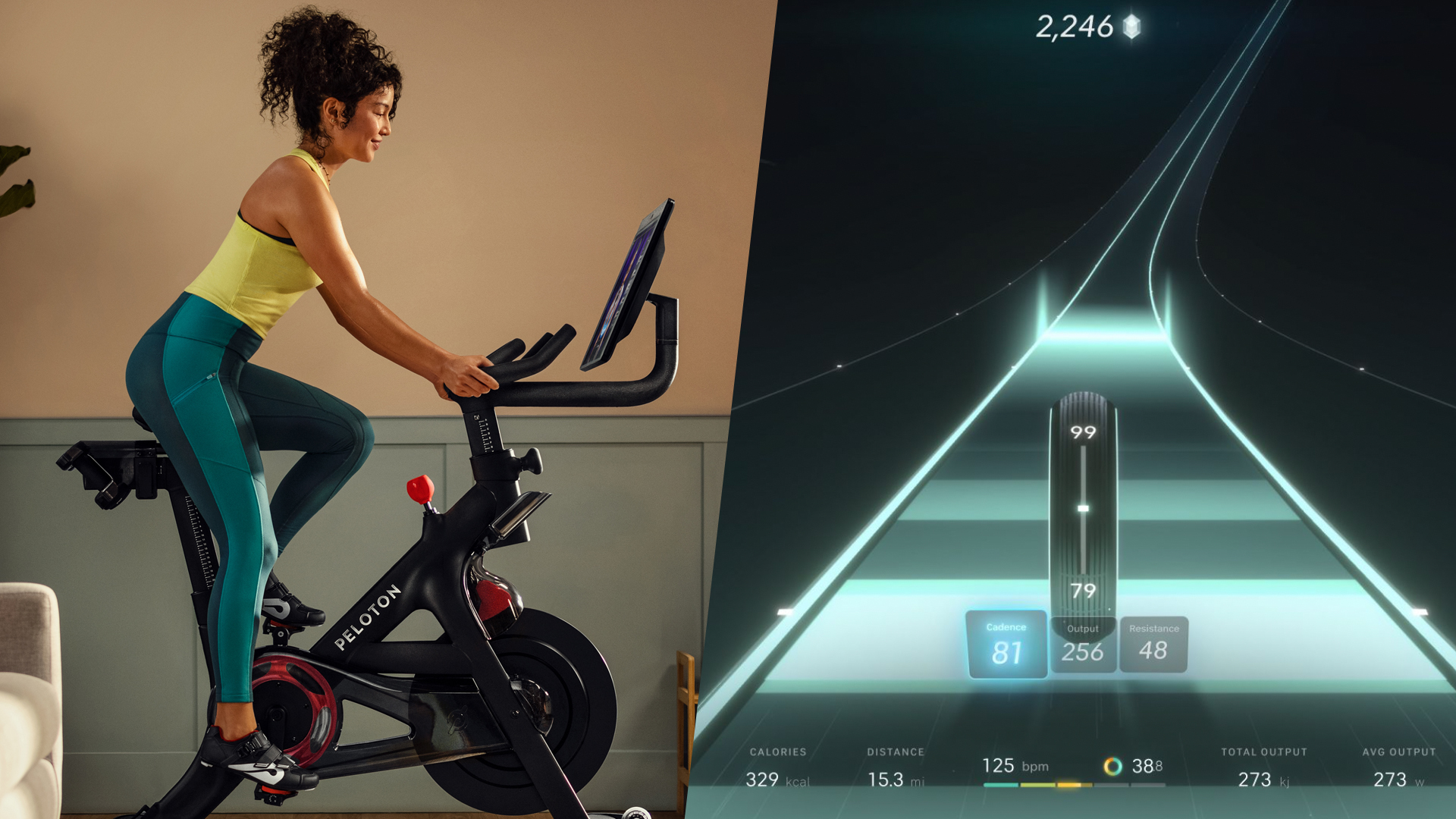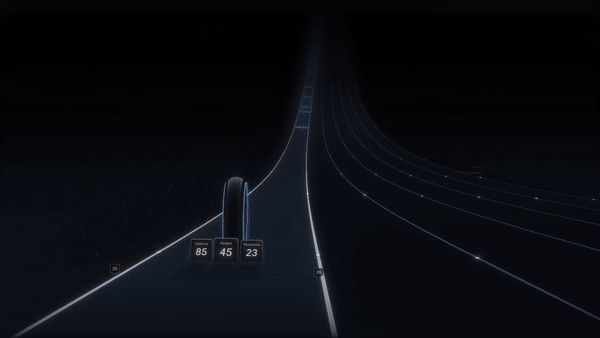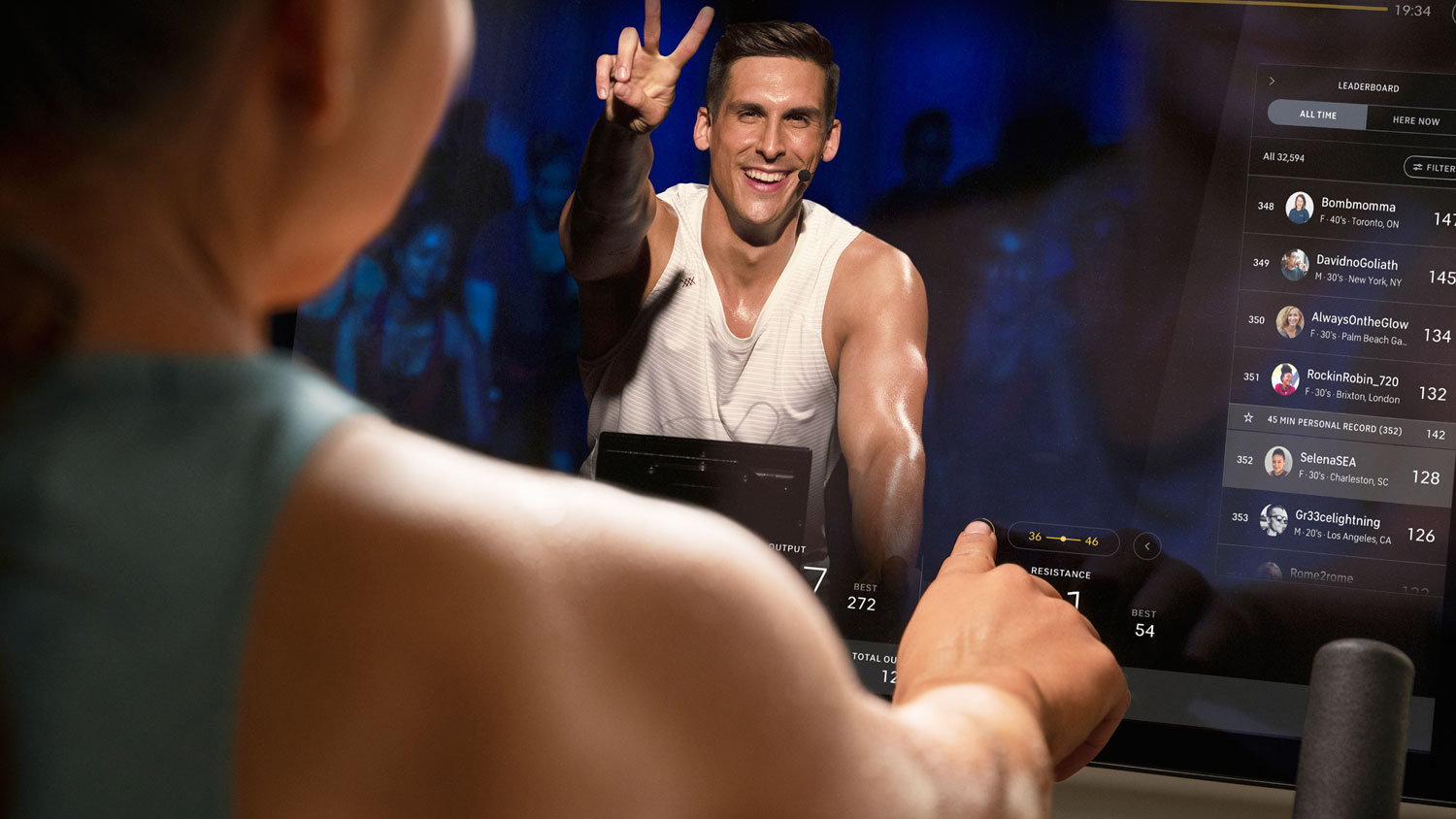

I’ll be honest, I didn’t think I was a Peloton person. Y’know, the idea of magnificent lycra-clad glowing gazelles with cores of steel and Marvel hero quads? And no, I’m not there (yet) but after more than two months of furious pedalling through Lanebreak on the Peloton Bike+, I’ve learned to stop worrying and love the spin.
Peloton’s first shot at pure gamification - excuse the buzzword - is a compellingly designed music experience that doesn’t just hit all of the right notes, but is a perfect gateway drug to the rest of the fitness behemoth’s other offerings.
What's Peloton Lanebreak?
Lanebreak officially launched on Peloton bikes in February 2022 but has been available in an early access beta form since mid-2021 for feedback and testing. That’s the first helpful hint that this isn’t just the company sticking the word ‘game’ on something and leaving it to die in a hidden menu.
If you haven’t seen the relentless Instagram Stories advertising, Lanebreak’s not dissimilar to the old-school PC music game Audiosurf. Here you control a tyre as it travels down a Tron-style track, hitting lane markings along to the music like a traditional rhythm game. To steer left and right you use the red resistance knob on the bike.
Thanks to Peloton’s enviable licensed audio library, this means hurtling along neon-lit speedways listening to David Bowie, BTS, Harry Styles, or even your favourite Disney soundtracks. Given that specific music, packs are the (wholewheat) bread and butter of successful VR fitness games like Beat Saber and Pistol Whip, this is an automatic win for Peloton.
But does Lanebreak deliver a good (great, even) gaming experience?
Peloton Lanebreak – Simple enough on paper, satisfyingly tough in practice
Helpfully, Peloton is already obsessed with three main stats - cadence (AKA how fast you’re pedalling), resistance, and output (measured in Watts) - and it’s these numbers that Lanebreak makes the most of. Pedalling will drive the tyre forward and you’ll need to skip between lanes with the resistance knob to make sure you’re collecting all the beats.
Sign up to the T3 newsletter for smarter living straight to your inbox
Get all the latest news, reviews, deals and buying guides on gorgeous tech, home and active products from the T3 experts
And of course, that comes with a difficulty range. The left lanes will go easiest on your legs, while the right lanes err into higher resistances. Just to mix things up, there are also what are called Streams where you need to be within a set cadence range and Breakers where you’ll need to up your pace to fill a bar within a short period of time. All the while, your star rating for the level fills at the top right of the screen and leaderboards encourage enticingly with global high scores.

It’s simple enough on paper but in practice, it’s satisfyingly tough. Whether you choose a five, ten, or twenty-minute workout, it’s easy to see why there’s a range of difficulty levels. Things get sweaty fast, and I’m often exceptionally glad that someone has thoughtfully handed over a choice of lanes at certain points in the tracks so we’re literally able to take the path of least resistance.
On every level, triangles happily fill with bright colours and hi-score numbers burst in all directions, all cheerfully signposting an understanding of reactive game design. I’m still waiting on Apple Watch auto sync-ing like the main workouts, but Lanebreak has all of the exertions of instructor-led content, with a compelling loop to keep going.
The lonely digital road
What it doesn’t have though, is the support of instructors. I was happy just cycling along to my choice of music initially but, and I’ll be honest here, it got a little lonely, not to mention difficult. Unlike my hundreds of hours spent in Beat Saber in VR on PlayStation and Quest 2, primarily gaming platforms, the Peloton Bike+ is, first and foremost, a piece of exercise equipment. Upping the resistance as someone who has never been on an exercise bike before just plain hurt.
I had to face it, a countdown in the corner wasn’t enough to push me through if I wanted to improve my scores. For that, I needed encouragement and that meant venturing into the world of Peloton instructors. After advice from a Peloton-owning friend I ended up falling into Cody Rigsby’s #BooCrew and it turned out all I wanted to hear was that I just needed to do the work.

There’s nothing quite like listening to someone break down your workout into a metaphorical box of six chicken nuggets and tell you there are only two nuggs left to keep you going. The running inspirational podcast nature of Cody’s delivery is near irresistible and a welcome conversational world after the expansive sci-fi speedways of Lanebreak.
Even non-live classes tend to have others spinning alongside you, delivering high fives if you hit achievements. Another reminder that Peloton might not have had an official game until now but all of the leaderboard and achievement systems fully understand our need for the occasional digital pat on the back.

Is this the end for Peloton Lanebreak?
That doesn’t mean I’ve dropped Lanebreak - that would be a bit of an anticlimax for this piece, wouldn’t it? Roaming the digital highways is now part of my warm-up or cool-down routine. A light 20-minute session is ideal for a low-impact rest day with bonus Paramore.
It’s not a secondary option so much as my additional workout and having a better understanding of my own limitations through instructor-led sessions means I know when to get out of the saddle or when to drop cadence. Plus, if I’m just in the mood for music I’ll load up a track and make the most of the dumbbell and weight training learned from another class. Ironically, I’m now making Lanebreak more challenging for myself with bonus curls and Arnold Presses.
So has Peloton’s gamification succeeded? In short, yes. Arguably, it’s done exactly what the company probably hoped for, bringing me in with the promise of high scores and game mechanics, only for me to be looking forward to daily instructor sessions.
Lanebreak is still in a growth phase, and there are clearly still upgrades to come as there’s a questionnaire after each session, but it’s a compelling addition to Peloton’s already impressive roster. Now though, if you don’t mind, I’ve got those Marvel quads to aim for and there’s a new Pride pop mix...
Louise Blain is a journalist and broadcaster specialising in technology, gaming, and entertainment. She has a weekly consumer tech slot on BBC Radio Scotland and is the presenter of BBC Radio 3's monthly Sound of Gaming show. She can also regularly be found on BBC Radio 4, BBC Five Live, and The Evolution of Horror podcast as well as writing for GamesRadar and NME. Louise loves finding ways that tech can make our lives better every day and no, she doesn't have enough smart lighting yet.

